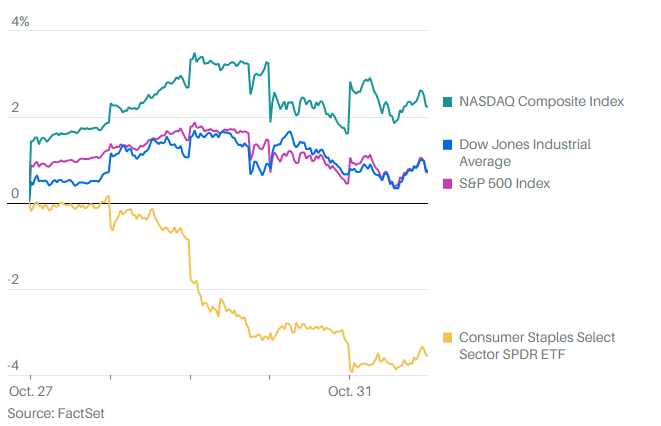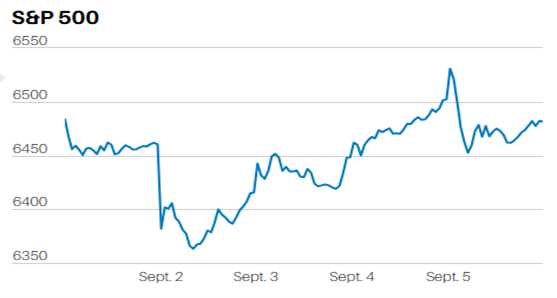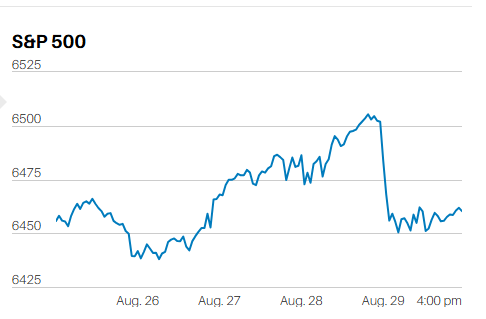HERE'S HOW WE'RE HANDLING THE MARKET PULLBACK
Last week we wrote, “We didn’t get the sell-off we expected two weeks ago; a pullback may have started on Thursday though. Again, whether we get follow through this week will tell us much about the current mood of investors.” Turns out a pullback did start a week ago Thursday and what a pullback it’s been so far! The S&P 500 entered correction territory in just six sessions, faster than any other time after setting a record high. The index ended the week down over 11%, closing at 2954.22. The S&P 500 is down 12.95% from its February 19th record high and 8.6% on the year. Nothing more than a very normal correction so far except for the rapidity. Interestingly, the MSCI EAFE (international) index has only fallen 7.1% compared to the more than 12% S&P 500 decline. Emerging market stocks are only down 5.9% during that same period.
The S&P 500 is very oversold and due to bounce this week. How high and how long the bounce lasts are in doubt. Markets rarely make V tops prior to a bear market. Normally bear markets are preceded by a distribution phase lasting two to three quarters or more. Wall Street insiders refer to it as a distribution phase because they claim the smart money is selling while the dumb money (the public) buys. True or Wall Street ego? No one really knows where reality and myth collide. Regardless, a bounce to around 3063 is quite possible this week, a gain of about 3.7%. The real question is whether investors should sell the bounce.
Economic Data
The bond market is predicting the Federal Reserve will cut rates at least three times by year-end. A few short weeks ago the consensus was no rate cuts in 2020. Now, the futures market is forecasting a 100% chance of a rate cut in March, perhaps by 0.5%. The bond market is priced for a recession. The 3-month/10-year curve is inverted, as is the more important 3-month/5-year. The 30-year Treasury is at a record low yield of 1.68% and the 10-year Treasury is also at a record low yield of 1.16%. Bonds are screaming recession. We might get one or we might not. The world economy is choking on debt, as is the U.S. economy. Interest rates are distorted by Central Bank buying. The underlying U.S. economic data is still showing a reasonably strong pulse, although recent retail sales data was sluggish, and the Job Openings Labor Turnover Survey (JOLTS) has fallen to a near two year low. The reality is that no one really knows how disruptive Covid-19 will be to the world economy. The virus is the wild card and we’ll need to wait and see how events unfold.
Is it time to buy?
Five clients called, texted, or emailed last week. Three wanted to know if it was time to buy (two had stock buying suggestions). Two clients wanted to sell everything; one of the latter guaranteed me we were going to have a recession. I’m going to wax Warren Buffet for a few paragraphs if I may.
Bear markets are a wonderful time to buy. You do need cash or near cash of course. Market timing is extremely hard to do, perhaps impossible. It is possible though to buy good companies when they go on sale. You aren’t going to buy them right at the bottom of the stock market pullback. You aren’t going to buy them at the bottom price for the individual stock either. You can buy them when they’re trading for far less than they typically trade based on Price-to-Book, Price-to-Sales, Price-to-Cash Flow and Price-to-Dividend. You can buy quality companies with good balance sheets that are paying a nice dividend and that have above-market appreciation potential over the next three to five years.
We’ve had many of our clients in more conservative portfolios than their situations allow. We’ve had them in more conservative portfolios since the Fed started aggressively raising interest rates in 2017. The S&P 500 is up about 30% since the beginning of 2017. It was up 3% from the beginning of 2017 to the December 2018 low. A run of the mill bear market that lops 30% from the S&P 500 will take it down to 2375, which is 1% above the December 2018 low and 4% above the January 2017 starting point.
Here’s how we’re handling the pullback. We’ve been calling and emailing clients letting them know we’d like to move them into more aggressive portfolios. (Still appropriate for their financial plan.) We started making those calls a month or so ago when we began finding more good companies on sale. The further the market falls the more good companies will join our growing list. Market timing doesn’t work, at least that’s what the data shows. Buying good companies on sale that are paying a nice dividend does work. Rather than make a top-down call on a market bottom, we’d prefer to make a bottom-up call based on the bargains we are finding in the stock market. As Benjamin Graham used to say: it’s a market of stocks, not a stock market.
Regards,
Christopher R Norwood, CFA
Chief Market Strategist













